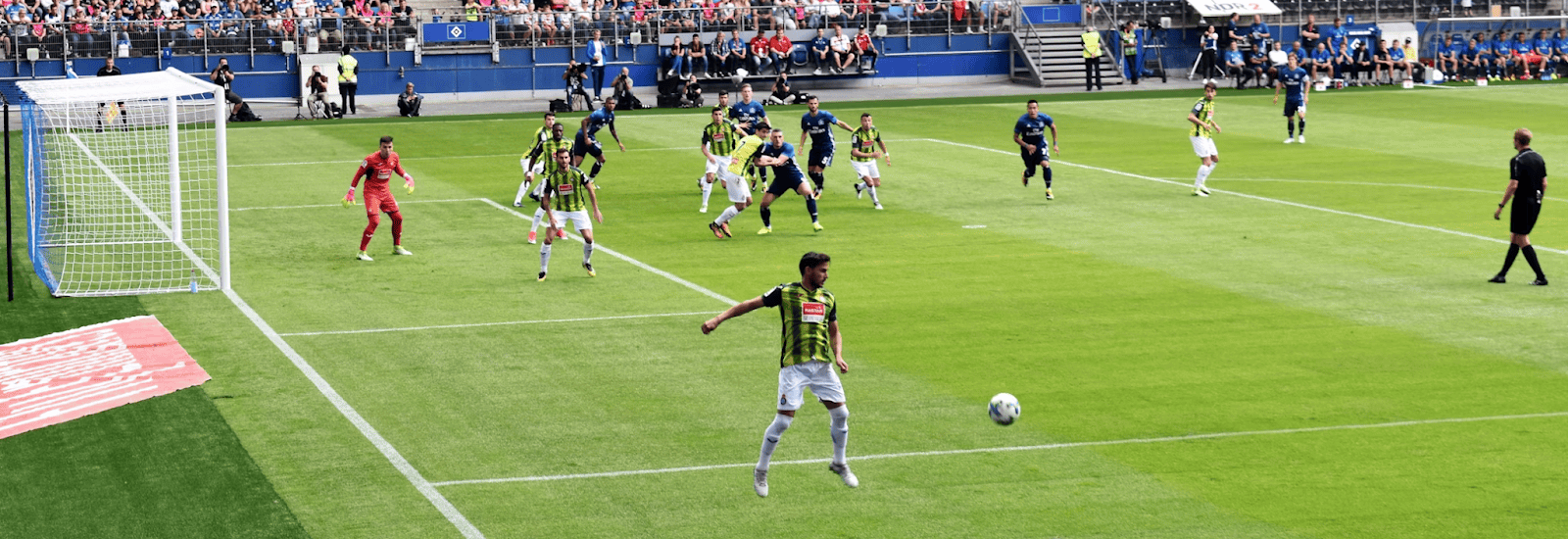Soccer may be the world’s most popular sport, but if you’re new to it, the rules and flow of the game can seem a little mysterious at first. The good news is that you don’t need years of experience to enjoy a match, just a basic understanding of how the game works. From scoring and stoppage time to key positions on the field, a few essentials are all it takes to follow along with confidence. Brooklyn FC makes it even easier for local fans, bringing professional women’s soccer to Coney Island with an atmosphere that’s as exciting as the action on the pitch.
The Basics of Soccer
At its core, soccer is a simple game: two teams of 11 players each try to score by kicking the ball into the opponent’s net. Matches are split into two halves of 45 minutes each, with a short halftime break in between. Unlike many American sports, the clock doesn’t stop for fouls or substitutions. Instead, the referee adds “stoppage time” at the end of each half to make up for lost minutes.
The field, known as the pitch, is rectangular with goals on each end. Players wear uniforms with cleats, shin guards and jerseys, while goalkeepers are the only ones allowed to use their hands within their penalty area. Scoring is straightforward. Every time the ball completely crosses the goal line between the posts and under the crossbar, that’s one point — no extra kicks or multipliers.
Recap:
- Two teams of 11 players each compete to score goals.
- Matches consist of two 45-minute halves with a halftime break.
- The clock runs continuously; stoppage time is added at the end of each half.
- The field (pitch) has goals at both ends; only goalkeepers can use their hands in the penalty area.
- Scoring is simple: the ball must fully cross the goal line for 1 point.
Key Rules Every Beginner Should Know
Some soccer rules can seem tricky at first, but once you understand the basics, the game becomes much easier to follow. One of the most important is the offside rule: an attacking player can’t be positioned behind the last defender when the ball is passed to them, unless they’re in their own half. This prevents players from “goal-hanging” near the net.
Fouls happen when a player trips, pushes or otherwise plays unfairly. Depending on the severity, the referee may award a free kick, a penalty kick or show a yellow card (warning) or red card (ejection).
When the ball goes out of bounds, play restarts in a few different ways: a throw-in if it crosses the sideline, a goal kick if it goes out past the end line off the attacking team and a corner kick if it goes out past the end line off the defending team.
Finally, there’s the matter of stoppage time. Because the clock doesn’t stop for substitutions, injuries, or delays, referees add extra minutes at the end of each half to ensure that time is made up.
Recap:
- Offside: Attackers can’t be beyond the last defender when receiving a pass.
- Fouls: Lead to free kicks, penalties or yellow/red cards.
- Restarts: Throw-ins, goal kicks or corner kicks, depending on where the ball went out.
- Stoppage time: Added minutes at the end of each half.
Positions and Tactics to Watch For
While soccer may look like 22 players simply chasing the ball, every player has a specific role that shapes how the match unfolds.
The goalkeeper is the only player allowed to use their hands, but only inside the penalty area. Their job is to stop shots, command the defense and organize play from the back.
Defenders focus on stopping the opposing team’s attackers. Center-backs patrol the middle of the field, while full-backs cover the flanks. Many full-backs also join the attack, overlapping with wingers to deliver crosses.
Midfielders are the link between defense and attack. Some specialize in winning possession and breaking up plays, while others focus on creating scoring opportunities. Central midfielders often dictate the tempo of the match.
Forwards are usually the main goal scorers. Strikers stay near the opposing goal to finish chances, while wingers use speed and skill on the outside to stretch defenses and deliver passes or shots.
Beyond positions, coaches use formations like the 4-4-2 or 4-3-3 to balance defense and attack. Watching for tactical choices — such as a high defensive line, counterattacks, or short-passing buildup play — helps you see the strategy behind the action.
TL;DR:
- Goalkeeper: Stops shots and organizes the defense.
- Defenders: Protect the goal; full-backs often join the attack.
- Midfielders: Control possession and create chances.
- Forwards: Main attackers who score goals.
- Formations/Tactics: Look for different systems and strategies shaping the flow of play.
Tips for Watching and Enjoying a Match
When you’re new to soccer, the nonstop action can feel overwhelming. The trick is to focus on a few key details that make the game easier to follow. Start with the ball, but don’t be afraid to glance at how players move off it — often, the most important plays come from clever runs or smart positioning before the ball even arrives.
Pay attention to momentum shifts. A strong defensive block, a quick counterattack or even the roar of the crowd can signal that the game is about to change. These little cues help you anticipate what’s coming and stay engaged.
Soccer is also about atmosphere. Learn a chant, join in a cheer and soak in the energy of the supporters around you. Whether you’re at the stadium or a local soccer bar, being part of the fan culture makes the experience more fun.
Finally, don’t worry about knowing every detail. Even lifelong fans still debate rules or strategies. The beauty of the sport is in the flow of the match and the excitement of seeing a team push forward together.
Where to Watch Soccer in New York City
The best way to learn the game is to watch it live. In Brooklyn, nothing beats catching Brooklyn FC at Maimonides Park in Coney Island. The energy of the supporters, the ocean breeze off the boardwalk and the thrill of professional women’s soccer make for an unforgettable matchday.
If you’re looking for a lively atmosphere outside the stadium, New York City is filled with soccer-friendly pubs. Spots like Smithfield Hall in Manhattan and Banter in Brooklyn are known gathering places where fans from around the world come together to watch matches.
Streaming is another option if you prefer the comfort of home. Brooklyn FC games air on Peacock and SportsNet New York (SNY), and other platforms like ESPN+ carry international leagues, so you can explore soccer on a global scale while keeping up with the local team.
Ready to watch your first live soccer match? Visit Maimonides Park in Coney Island to cheer on Brooklyn FC and spend the day enjoying the boardwalk.
FAQs
1. What league does Brooklyn FC play in?
Brooklyn FC competes in the USL Super League, the newest Division I professional women’s soccer league in the United States.
2. Where can I watch Brooklyn FC games?
You can watch Brooklyn FC live at Maimonides Park in Coney Island or stream their matches on Peacock and SportsNet New York (SNY).
3. What’s the easiest way to understand the offside rule?
Think of it like this: a player can’t be closer to the opponent’s goal than the last defender when the ball is passed to them, unless they’re in their own half.
4. How long does a soccer match last?
A standard match is 90 minutes plus stoppage time, which is added at the end of each half to account for delays like injuries or substitutions.




























































































































































































































































































